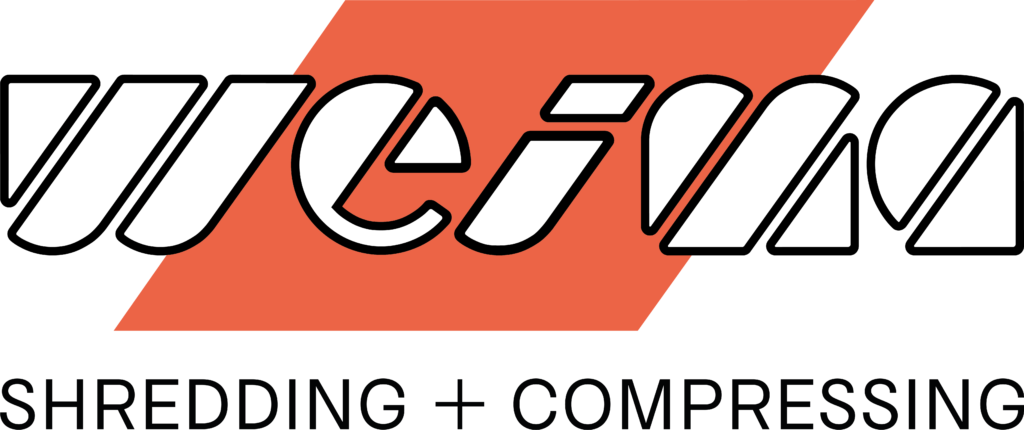For over four decades, WEIMA Maschinenbau GmbH from Ilsfeld has been relying on the advantages of a broad technology network whose strengths are pooled in project teams. This includes companies from the fields of conveying, suction, sorting, separating, drying, screening, washing, metal detection, storage, and extrusion. WEIMA is therefore able to implement everything from individual machines to multi-stage processing lines.
Fire and flame for substitute fuels
To cover the wide range of residual materials, from household and municipal solid waste (MSW) to industrial and commercial waste (C&I), WEIMA has developed shredder types to suit the respective application: the popular PreCut, PowerLine and FineCut series.
WEIMA offers two solutions for the pre-shredding of heavily contaminated waste (sizes 150-400 mm): The PreCut single-shaft shredder from 1,500 to 3,000 mm working width and the M8.28 twin-shaft shredder with 2,800 mm working width. Both series are equipped with a hydraulic direct drive, which makes them less sensitive to contaminants. WEIMA pre-shredders are ideal for mechanical-biological waste treatment.
While WEIMA PowerLine single-shaft shredders can be used as universal machines for both pre- and post-shredding (particle sizes 30-150 mm), the FineCut series has been specially developed for post-shredding (particle sizes 15-80 mm).
WEIMA relies on drive diversity
WEIMA shredders are known for their robust machine design, high throughput rates and user-friendly maintenance. In addition to a perfectly configured cutting geometry, the drive plays a decisive role in achieving the optimum shredding result.
The hydraulic drive from Hägglunds Bosch Rexroth is particularly suitable to produce substitute fuel, as it does not have a classic gearbox that is subject to wear from impacts. This makes it fast-reacting and less sensitive to shocks from interfering materials. In addition, stopping, starting, and reversing is possible at any time, even under the most difficult conditions and even at full load. Speed and torque can be adjusted quickly, smoothly, and continuously by means of a variable speed pump, without current peaks or the need for a frequency converter. The robust drive is extremely efficient and operates at extremely high torques with low connected load.
Alternatively, WEIMA shredders can also be operated with high-torque electric drives from Baumüller. The high-torque, multi-pole synchronous motor is produced in Germany and is characterized by its insensitivity to foreign objects. Without a gearbox, the drive withstands shocks and vibrations and therefore has a particularly long service life – even when shredding challenging material flows. In addition, a coupling between the rotor shaft and drive protects the motor from damage and can stop the rotor immediately if foreign objects enter the cutting chamber. The torque and speed can be precisely adjusted via a frequency converter to achieve optimum results in terms of throughput and
quality of the shredded material.
In addition to the options described above, WEIMA also has a conventional electromechanical drive in its portfolio, which is used in the FineCut series and the smaller WL and WLK machines, for example. This proven drive option is maintenance-friendly and low-wear. A safety clutch protects the shredder from
foreign objects and major damage.
Condition monitoring for greater energy efficiency and productivity
The reliability of WEIMA shredders is largely due to the high level of vertical integration. In addition to traditional mechanical engineering, WEIMA has also become a specialist in electronics and digital networking over the last few decades. All control cabinets, from design and wiring to programming, are
produced at the company’s German headquarters in Ilsfeld.
WEIMA was quick to recognize the needs of its demanding customers regarding Industry 4.0 applications, which means that all shredders can be fully networked and integrated into practically any production line. The WE.monitor condition monitoring dashboard was further expanded for IFAT. Customers can monitor the real-time data of their machine at any location and are automatically informed of any messages. The focus here is on optimizing energy consumption, reducing downtimes, and increasing maintenance efficiency.
























